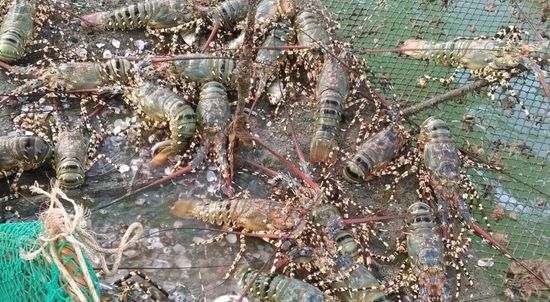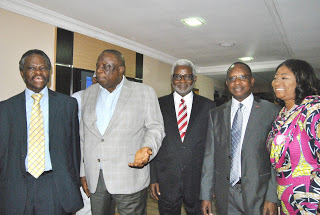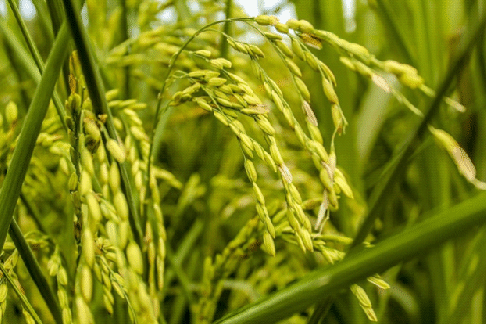How NIWA’s Floating Jetties Can Dissipate Lagos Transport Woes – Braimah

Mrs. Sarat Braimah is the Area Manager, Lagos Area Office, National Inland Waterways Authority (NIWA). In this interview with MaritimeTVnews, she highlights the opportunities of waterway transport in Lagos, narrating NIWA’s contribution towardsdeveloping the sector as the State undergoes a logistic hitch posed by the closure of the Third Mainland bridge. Enjoy it!
Following the closure of Third Mainland bridge for repairs which would last for six months, a lot of emphasis is placed on the waterways. How prepared is NIWA for this task?
We know a lot of people will be so worried about the closure of the Third Mainland bridge and that is why NIWA has sprang up with a lot of alternatives. We already had several routes for transportation via the waterways. However, we have opened a jetty under the bridge at Adekunle so that anybody coming from Ikeja, Maryland, etc, can connect via waterways to Victoria Island, Lekki, and Ajah.
Another jetty was also opened by Lagos State at Ilaje/Bariga which is the Univeristy of Lagos (UNILAG) axis of Third Mainland bridge. People heading to Apapa and other environs can connect via this jetty from Yaba environs. It would take less than 25 minutes for this journey but more than 5 hours via the roads because of the traffic congestion. Water transportation is safe and it is high time more Lagos residents opt for the waterways
We have put in a lot of security measures to ensure that people are safe when they are commuting with our boats. Wehave four partners that are collaborating with NIWA to achieve efficient water transport system in the State. We have Texas Connection, Sea Lead, Sea Coach and Tarzan Nigeria Limited. They havebrought in their boats and ensured that people can board at Adekunle, Oyingbo and several other areas in Lagos.
It seems the focus is on movement to the Lagos Island and the other way. How did NIWA arrive at these locations you mapped out and how safe are the locations?
Third Mainland bridge is closed inward Lagos and most of the bridge connects Island to Oworonshoki. That is why the plan is to take people off that lane by providing a jetty in that place. The closure of Third Mainland bridge also means that Carter bridge would be overburdened because that is the only alternative route by road.
From what you have explained, the floating jetties were put in place to dissipate the challenges posed by the closure of Third Mainland bridge. Can you throw more light on this in terms of number of boats provided and the level of preparedness?
We have boats ready for this movement but we want to be sure of the number of passengers. We want to be sure how people would respond, that is why we want to start a pilot test on Monday. If there is a need for more boats, then we would deploy more boats.
It all depends on how people respond. On the aspect of security, we know that we don’t have enough manpower to carry out that task at NIWA, so we are collaborating with the police. The Assistant Inspector-General of Police, Maritime visited NIWA Lagos Area office recently and we discussed extensively. He also assured that he would deploy more men to safeguard the waterways following the closure of the Third Mainland bridge and the emphasis on waterways.
The Police boss promised thirty more officers deployed to these areas and we have three new locations such as jetties. We are ready to expand as the demand increases.
One of the areas of fears deterring people from embracing water transportation is the incessant reports of drowning and boat capsizing. This year, there have been such reports. How does NIWA keep operators in check to curb these boat mishaps?
In the past, we had incessant boat mishaps but we have been able to minimize the accidents on the waterways. So far this year, we have had just one boat accident in Lagos and it occurred because it was night travel. To curb this, we have put in place a regulation to ban travel on the waterways later than 6pm.
Boat operators in Lagos are only allowed to do their business from 6:30am to 6pm. If you find an operator who asks you to come onboard a boat after 6pm, you are doing that at your risk.
Operators lament over multiple taxation byLagos State and NIWA. What is NIWA’s role in ensuring boat operators in Lagos are not overtaxed with LASWA also collecting similar charges?
The case between Lagos State government and NIWA was in court and it got to the High Court where NIWA won. The matter was later taken up to the Appeal Court where LASWA was asked to take charge of intra waters, referring to waters that start and end in Lagos. However, I don’t think such navigable waters exist.
Boat operators have to be registered with NIWA to collect their operators permit and Lagos State doesn’t charge for that anymore.
Another thing that NIWA does annually is the clearing of water hyacinth on the waterways. Why is this important?
Water hyacinth is seasonal in Lagos. It comes from June/July and stays until the end of the year. These water hyacinth must be removed because it poses lots of navigational hazards on the waterways. NIWA has taken up the responsibility to do this as part of efforts to ensure a seamless environment for the operators.
Several boat operators have complained that their boats got spoilt or hooked during transit as a result of water hyacinth. So, we continually clear these water hyacinths to curb these anomalies.
We are also involved in the removal of wrecks from the inland waterways because lots of boat operatoprs have equally reported that their boats got spoilt because they ran into a wreck. The NIWA management under Dr. George Moghalu approved the clearing of water hyacinths and wrecks last year from Mile 2 and this year we would be clearing from Ikorodu axis.
There have been studies on the use of water hyacinths with several reports of its usefulness. What do you do with water hyacinths after removing them from the inland waterways?
At the moment, the research on the usefulness of water hyacinth is still ongoing. The Minister of Science and Technologyis doing so much in this regard. However, the challenge is that the product isn’t something that is available everyday. It is seasonal as it comes for about four months every year. So, if it is only available for few months; how would people use the product during the off-peak season? I think that is the major challenge with the research and usefulness of the product in Nigeria.
The hydrographic chart of Nigerian waterways is also a conflicting issue in the sector. What is the update on that?
NIWA has charted all the inland waters in the country. The only thing we are still doing at the moment is navigational aids. We have charted all the inland waterways including the creeks. Navigational aids, however, are needed to indicate to boat operators where to go and where not to ply.
NIWA is also partnering with the Nigerian Maritime Administration and Safety Agency (NIMASA) for the training of boat operators. One of the problems we have in this sector is that most of the captains of the small boats are illiterates. Therefore, we try to reach out to them using less formal languages and methods to get them to understand the operational standards. NIWA started this approach last year as we engaged boat operators at Liverpool jetty. This time, we want to make it more strategic so that they would have certificates to show that they underwent such training. That is why we are getting NIMASA involved.
Is there a databank of these boat operators so that NIWA knows those involved in the business?
We have that database. In fact, two months ago, there was collaboration between NIWA and LASWA on this. The collaboration showed that both organizations are after the safety of those using the waterways. NIWA and LASWA are in collaboration on safety to ensure that all boats utilized in the state are certified by both parties. There are NIWA and LASWA members of staff that are trained Marine Surveyors to inspect boats fit to operate on the waterways.
Throw more light on how much boat operators in Lagos State have complied with the guidelines established 3 years ago on the specific boats to operate on the waterways. What have been the challenges?
Under Engr. Sambo Muazu as General Manger, NIWA Lagos Area Office established the kind of boats and designs to be utilized on the waterways. However, what we have achieved till date is less than 60% compliance.
The challenge is that we have a lot of people currently plying our waterways and the number of boats aren’t sufficient. So, it has been difficult to impose the new standards or specification of boats when they are too few available. In fact, we have had instances where the passengers started begging us to leave the operators alone, because they just want to move. However, we can’t and won’t compromise on the standards because of safety.
Did NIWA take a step further in liasing with the Ministry of Finance, Bank of Industry (BoI) or Central Bank of Nigeria (CBN) to ensure that operators get funding to build boats that meet the stipulated standards?
NIWA has written BoI to allow boat operators or would-be investors access to funding. The deliberations have been fruitful and I can say theyhave reached about 70%. Probably, in the next three months we should see boats that have been sponsored by BoI.
Lagos is expecting massive flooding this year. How is NIWA preparing for that?
We have meteorological departments in the Nigerian Navy. They do the weather forecasts and send to NIWA so that we can guide our operators. We are sister parastatals, so they send the monthly forecasts and we brief boat operators.
The cost of the fares for inland transport in Lagos has been described as too expensive. What is NIWA doing to regulate this aspect of pricing?
NIWA is regulating fares; however, the new increment is as a result of the COVID-19 regulations. Recall that we told the boat operators to only carry 60% of the capacity of the boats. This led to an increase in the fare, but the Governor has said the operators can return to 100% capacity. The Governor of Lagos State, Mr. Babajide Sanwo-Olu said this last week.
LASWA and NIWA have been able to come up with guidelines on the carrying capacity of the various kinds of boats in Lagos. We also collaborated on how much boat operators should charges. So, the challenge of increased cost would be addressed as the operators revert to the previous capacity.
Since the interviewe centered on Third Mainland bridge closure and opportunities via inland waterways, what’s your last word to Lagosians?
Lagosians should utilize the waterways because it is a viable transport option that is safe, secure and NIWA is ready and willing to support them.







